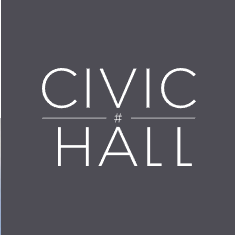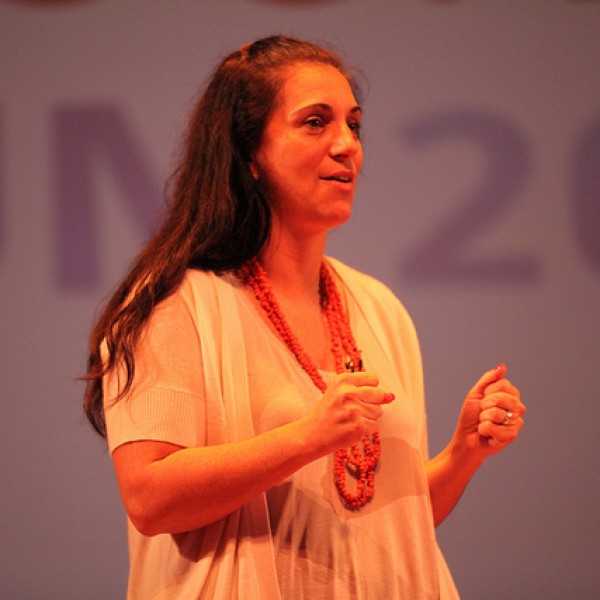HOW “CIVIC ANTIBODIES” ARE EXPOSING THE ITALIAN MAFIA
- ANTONELLA NAPOLITANO
- May 21, 2015
- 1:30 pm
MafiaMaps is an app to crowdmap the mafia phenomenon all over Italy.
“We want to make mafia visible to everyone, city by city, region by region.”
I am not at a press conference held by the Italian Ministry of Internal Affairs or the Head of the police; I’m with a group of young political science students. And this is not just wishful thinking: MafiaMaps is an app they are building to map the mafia phenomenon all over Italy.
Pierpaolo Farina, Hermes Mariani, Claudio Ripamonti, and Samuele Motta are part of the core group of MafiaMaps volunteers, about 15 people in their early- to mid-20s. We meet in the courtyard of the Political Science faculty of the University of Milan, where they’re studying or recently graduated.
The group met and bonded during a political science class on the sociology of organized crime.
While in Italy there is—predictably—a lot of research on the mafia, the young students felt that there wasn’t a structured organization of all that knowledge.
So, two years and a half ago, they started WikiMafia, an online encyclopedia (Creative Commons-licensed) that now counts more than 200 full articles, and another 1,000 partially completed or draft articles.
On WikiMafia, you can find anything from mafia organizations and their historical development to power structures and infiltration in the public administration and private sector.
But as the WikiMafia volunteers’ work and their academic careers progressed, they felt that something was missing: How do you give people immediate access to all this knowledge? How do you make people understand that mafia is everywhere in Italy and closer than people think?
They eventually figured out that an app would make all of their research immediately available to anyone.
That idea became MafiaMaps, a constantly updated map pinpointing the last-known location of convicted criminals and of mafia killings, as well as where anti-mafia organizations are at work, creating projects and organizing events.
BUILDING A KNOWLEDGE BASE—AND A CROWDFUNDING CAMPAIGN
“We start from the judiciary inquiries,” explains Pierpaolo Farina, the project manager. “It’s the only way to have data that is compelling and precise: you have names, dates. Then we broaden the scope and keep researching, interviewing people and fact-checking everything.”
Analysis includes books and other research materials, sometimes even “oral history”: in many cases, I’m told, the “everyday” mafia victims do not make it to the news, so nobody writes about them.
Farina mentions the case of Pasquale Campanello, a prison guard in Poggioreale, Naples. A father of two, Campanello was only 32 when he was shot by four killers in 1993 for refusing to help convicted criminals receive messages and gifts from their outside accomplices. There are no books celebrating him, killed just for doing his job.
The team went to talk to his widow and created a lasting trace of his sacrifice: now WikiMafia has an article on Campanello and he will soon be on the map.
WikiMafia cost about 150 euros and many hours of volunteer work. Since its inception, MafiaMaps has aimed to have a life of its own: “We decided to launch a crowdfunding campaign to create a community that uses the app: it would be useless to develop it, otherwise,” says Farina. At 26, he is one of the few graduates of the group, as well as a published writer and prolific blogger.

Colors correspond to various mafia groups: The Sicilian Cosa Nostra is purple; the Calabrian ‘Ndrangheta is blue.
For months, the team studied other successful crowdfunding campaigns and then set up their own, with a number of intermediate goals: the first 10,000 euros will provide mapping for the Lombardy region, reaching the 20,000 threshold will allow them to map other two regions and so on. The final goal is 100,000 euros for all 20 regions.
“We wish we had Kickstarter in Italy: it would make things so much easier!” Farina jokes. But I interview them on a productive Monday morning: Farina has just returned from a popular morning radio show. “We raised 400 euros in 10 minutes!” he says.
Next, MafiaMaps will go “the start-up way,” they say, looking for foundation grants, sponsors, and other forms of financial support.
“We do not want public money, in order to avoid the controversy that often arises for those who work on the matter: that you do it because you expect to live with government funding,” Farina declared in an interview to prominent newspaper La Repubblica, earlier this month.
The Faculty of Political Science will soon give them a room to use as their headquarters and they are already in touch with a number of possible sponsors.
The campaign was launched on March 21 and has raised about 14,000 euros so far. As the final day is May 23, MafiaMaps will likely have only enough money to start mapping Lombardy.
The guys do not seem worried: they have already started developing the app: “We’re gonna start with that and do it in the best way possible,” says 23-year-old Hermes Mariani, a MafiaMaps co-founder from Lecco. “We will release the app as scheduled, next March. When people will see the results, they will want to help and support MafiaMaps in their region.”
ALLIES
MafiaMaps will allow users to contribute, pointing out news, events, but it will be a selective crowdsourcing.
“We’ll verify everything before putting it on a map, as we check carefully the contributions to WikiMafia,” 26-year-old Samuele Motta clarifies.
Many of them have studied the mafia for years and are critical of the sloppy work they often see on the issue. “If you say everything is mafia-related, then it’s easier to argue that nothing is really mafia-related,” says Claudio Ripamonti, a 20-year-old volunteer. They later explain that, in white-collar crimes, mafia affiliates are often a loose connection, but their role is often amplified. Also, despite many connections between mafia, politics, and enterprise, “we’ve never been sued in two years of work,” says Farina, laughing.
While big and small anti-mafia organizations are already supporting and contributing to the project, MafiaMaps has an ally in the Italian open data community, and, fittingly enough, from Sicily. Confiscati Bene (“well confiscated”) is a participatory project stimulate an effective re-use of buildings and other assets seized from the mafia.
The project investigates their current condition and potential through the analysis of relevant data coming both from official sources and from bottom-up, citizen-monitoring initiatives, as previously reported on techPresident.
It is not an easy task, Confiscati Bene project manager Andrea Borruso tells Civicist in a Skype interview: “Public datasets date back to 2013, many information are still missing and the quality hasn’t improved at all in the past two years.”
Confiscati Bene was born from a hackathon a little more than a year ago and has been nurtured by a small and active volunteer community. The founders recently created an association and are looking for a business model, Borruso says: “This year has been great but this project, this topic, deserves more, it deserves actual everyday work…instead of nights!”
He’s only half-joking: Borruso says that their work got them prizes and acknowledgments (they were mentioned as a best practice by former World Bank open data specialist Samuel Lee during the last PDF Italy) but it hasn’t got any easier in the 14 months since Confiscati Bene’s inception.
And the Italian institutions are not helping: “We’ve recently been told that the agency [ANBSC, the Italian National Agency for the Management and Disposal of Assets Seized and Confiscated from Organised Crime] is updating the data but at the moment nothing is available, not even the old datasets,” he explains.
As I write, an independent and volunteer initiative is the only place showing the national datasets of the confiscated assets, while the government page displays a “coming soon” sign.
“IN ITALY, CIVIC ANTIBODIES WORK!”
For many years, the mafia was perceived as only affecting the south of Italy and as a rough, unrefined form of organized crime. Inquiries and trials in the early 90s showed a rather sophisticated systems with ramification all over the country and abroad, including the United States.
One of the most prominent judges at the time, Giovanni Falcone, worked closely with the FBI, the NYPD, and federal prosecutors in a case known as the Pizza Connection, busting an international heroin smuggling ring that laundered drug money through pizza parlors. (His statue can be found at the FBI Academy in Quantico, Virginia.)
The fact that this kind of project started in northern Italy is quite significant: “We’re proving that civic antibodies work,” says Farina, a reference to the common metaphor of the mafia as Italy’s disease.
Still, it’s not easy to talk about it: “We recently presented MafiaMaps in my hometown,” adds Mariani. “People came to us saying that they know the mafia is there, but it’s better not to know all these things. We wanna show them they’re wrong.”
The MafiaMaps team follow the words of Judge Falcone, displayed on their website: “The mafia is not invincible, it is a human fact, therefore, it has a beginning and an end.”
One of the heroes of the anti-mafia movement, Falcone was killed with his wife and three police officers in 1992: his car exploded as he was reaching his native Palermo.
“Italy has been called ‘the mafia country’ for many years. We’re very proud when we’re interviewed by foreign media and hear that we’re now the country with a strong anti-mafia movement,” says Pierpaolo Farina at the end of our interview.
Last Monday, Judge Falcone would have turned 76. Saturday will mark the 23rd anniversary of his death.
It will also be the last day of the MafiaMaps fundraising campaign.


